I recently returned from a vacation in Cuba during which I had the opportunity to photograph a few different species of heron using my Nikon 1 V2 and Nikon 1 CX 70-300 f/4.5-5.6 telephoto zoom lens. I ended up photographing birds hand-held for about 7-8 hours every day and my Nikon 1 gear proved to be an ideal combination to take with me as it was very light and easy to handle, and I avoided the fatigue that can set in when using larger, heavier gear.
NOTE: click on images to enlarge
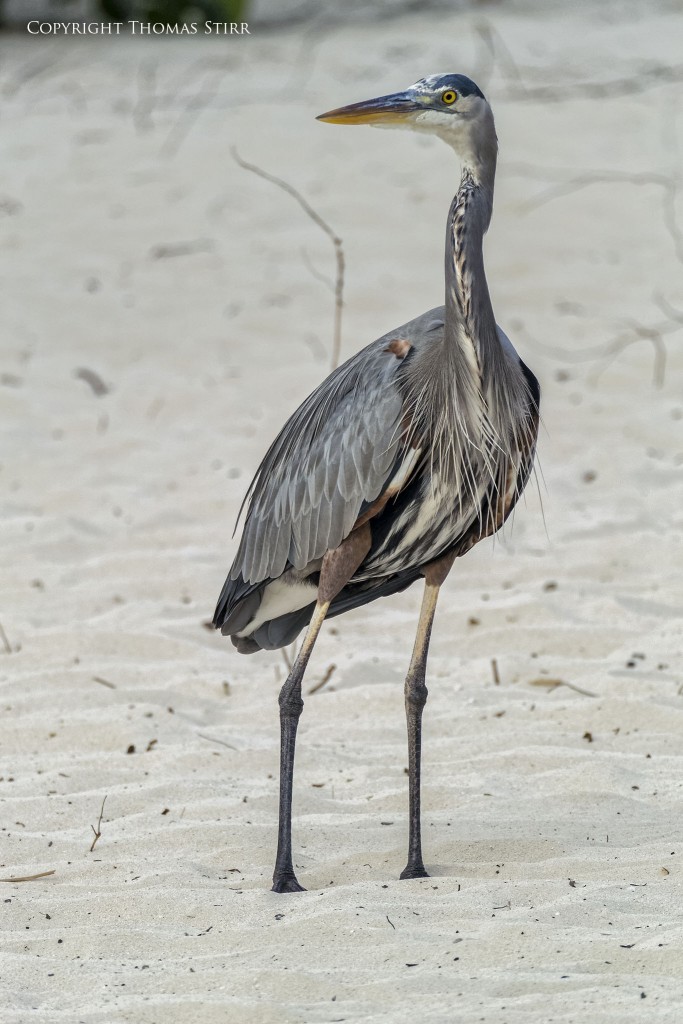
There is a good population of birds adjacent to the Playa Costa Verde resort, living in a fairly small wetland area that separates the grounds of the resort from the beach area. The wetland measures roughly 130 meters across (436 feet) by about 750 meters long (2,460 feet) and we had to walk over a causeway to get to the beach. The water in the wetland is quite shallow and in most places is only between 1 and 2 feet deep (30.5-61cm). This is ideal for herons and egrets. The walkway also serves as a great platform from which to photograph a wide variety of birds including Smooth-billed Ani, Turkey Vultures, and various shorebirds.
In this article I’ll be featuring images of three different heron species that were resident in the wetland area: the Great Blue Heron, the Green Heron, and the Tricolored Heron. Readers who are interested in finding out more about these particular species or who would like to see some additional images I took can click on the links.

The perimeter of the wetland has quite dense underbrush, but I was able to find a handful of spots where I could make it down to the water’s edge. These became part of my daily routine as I kept checking around the wetland area looking for image opportunities. As is often the case with birds, early morning and late afternoon proved the most productive times with the greatest number of bird species visible. Being the largest of the heron species living in the area, the Great Blue Heron were the easiest to spot. A couple of individuals also had favorite hunting territories and I quickly learned which locations to check out and at what times of the day.

Due to the mangrove trees growing throughout the wetland capturing birds in flight was very challenging as I was usually shooting in tight quarters. I was able to get a few usable bird-in-flight images, but I spent most of my time focusing on more stationary subjects. More often than not the Great Blue Herons would be tucked up right against the shoreline and when I made my way down to the water’s edge they were totally hidden. Then I’d hear some loud squawking and one of these magnificent creatures would take flight – always away from me! As a result I was never able to capture any images with them flying towards me or at right angles to me.
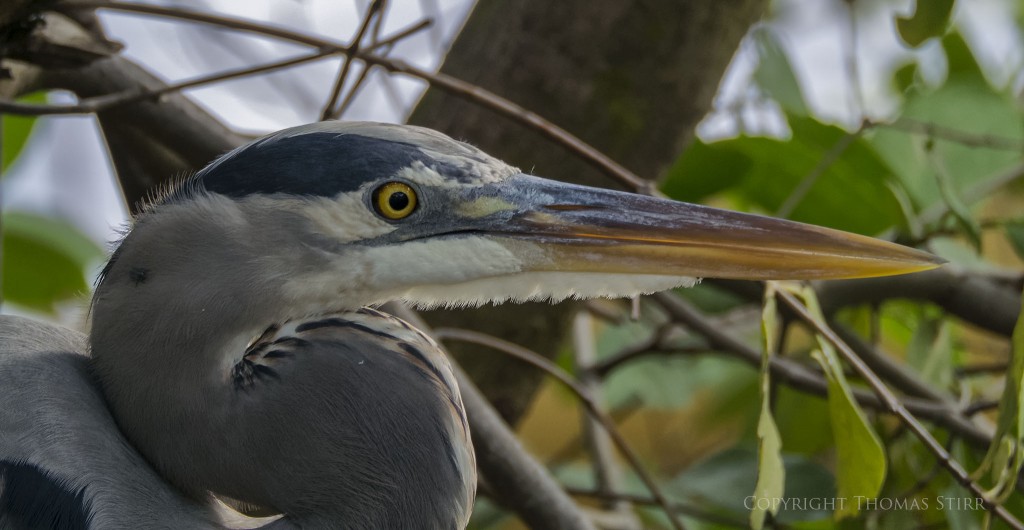
The small size and light weight of my Nikon 1 rig was very useful when I tried to slowly approach individual birds as not to scare them off. I often had to shoot between branches and foliage to get images and the reach of my Nikon 1 gear was a godsend. The image above is a good example. I was able to sneak up on this Great Blue Heron that was resting in shade at the base of a tree and get within about 15-20 feet (4.6-6.1 m) of it, taking this shot at 300 mm or an equivalent field of view of 810 mm. That allowed me to virtually fill the frame with just the head of the bird. As is my practice, I shot the entire week in aperture priority with my Nikon 1 V2 usually set at f/5.6. I started out the week using AF-S with single point auto focus, placing it over the bird’s eye whenever possible.

Since my Nikon 1 V2 allows me to place that single AF point anywhere on the frame I was able to compose images exactly as I wanted, as in the example above. When possible I always prefer to capture images precisely in terms of framing so I can avoid any cropping in post. This is one of the reasons that I much prefer shooting with zoom lenses rather than primes. Also, with the Nikon 1 V2 being limited to a 14 MP sensor, avoiding crops in post gives me more data with which to produce final images.
I spent a day or two trying valiantly to get more bird-in-flight images and switched to AF-C with subject tracking. What few shots I was able to get were with this setting. At the end of the week I was mainly experimenting with shooting hand-held video, both in HD at 30 fps and in slow motion (my Nikon 1 V2 can shoot at 400 fps – but only at 640×240 resolution. I used AF-F (auto focusing – full time) for video since I could not see well enough to try manual focusing. I haven’t had the opportunity to go through all of my video clips yet to see if I have any decent material that may be suitable for an article.
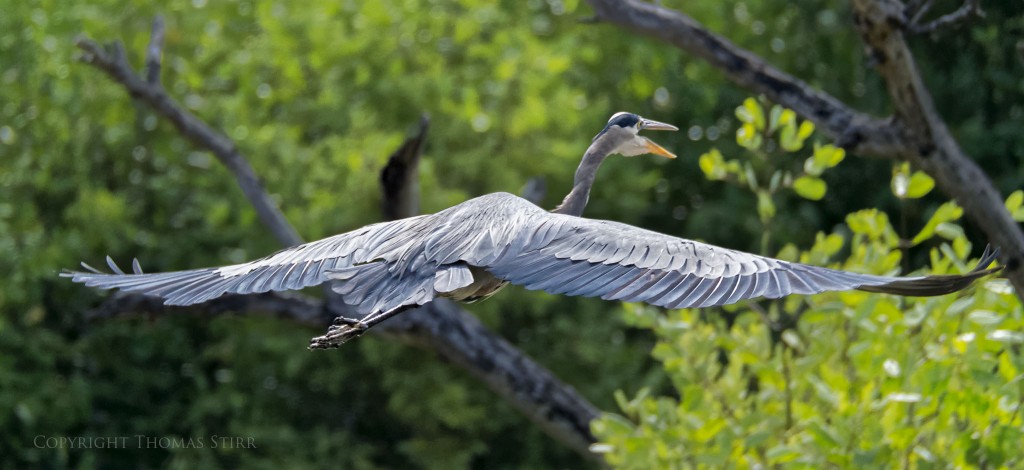
For the most part I used matrix metering for my still images, but did mix it up a bit depending on lighting conditions. I did get some ‘lucky’ captures – being in the right place at the right time does happen! Ideally I would have used a faster shutter speed, but sometimes things happen so quickly all you can do is get the shot as best you can.

I spent quite a bit of my time peering inside trees and bushes looking for birds. The image below of a Green Heron was one such capture. I found this little fellow in the middle of a mangrove bush in dark shade. He must have felt quite safe because he just sat there and watched me taking his picture, staying motionless for a couple of minutes. My Nikon 1 V2 did a good job focusing under these conditions and I was able to get this image hand-held at 1/100 at 300 mm (or an equivalent field of view of 810 mm). I risked the slower shutter speed so I could keep my ISO fairly low at 200. I knew I would have to do some digging in the shadow areas of this image in post and I wanted to hold as much dynamic range as I could.
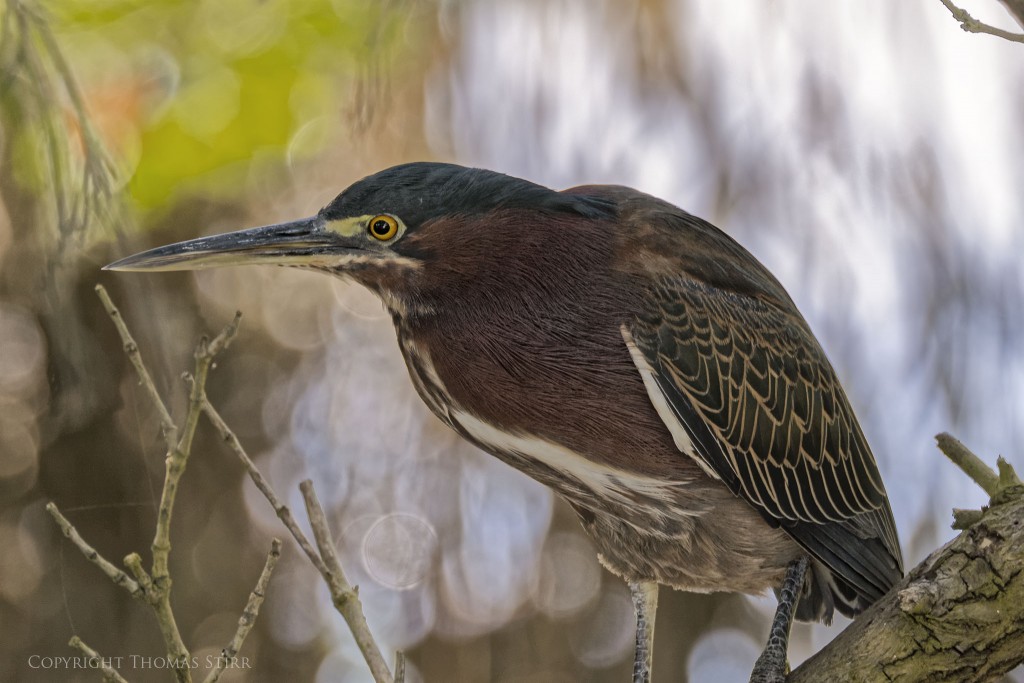
My week in Cuba was the most amount of dedicated time that I have ever spent photographing wildlife and I came away from the experience with a much better appreciation about how important it is to understand your subject and its habits. One of the biggest reasons why I was able to get the image below was simply that I had learned that the Green Herons liked to hunt in three, small areas of the wetland. So, in the early mornings and late afternoons I would visit those three locations specifically looking for these birds.

Other birds like the Tricolored Herons were much easier to find as they would feed throughout the day and they favored ‘fishing the flats’ rather than being close to shore. The challenge with this species was to remember to adjust my camera settings to allow for their more frantic type of movement. At times they would almost be running through the water in pursuit of their next meal.
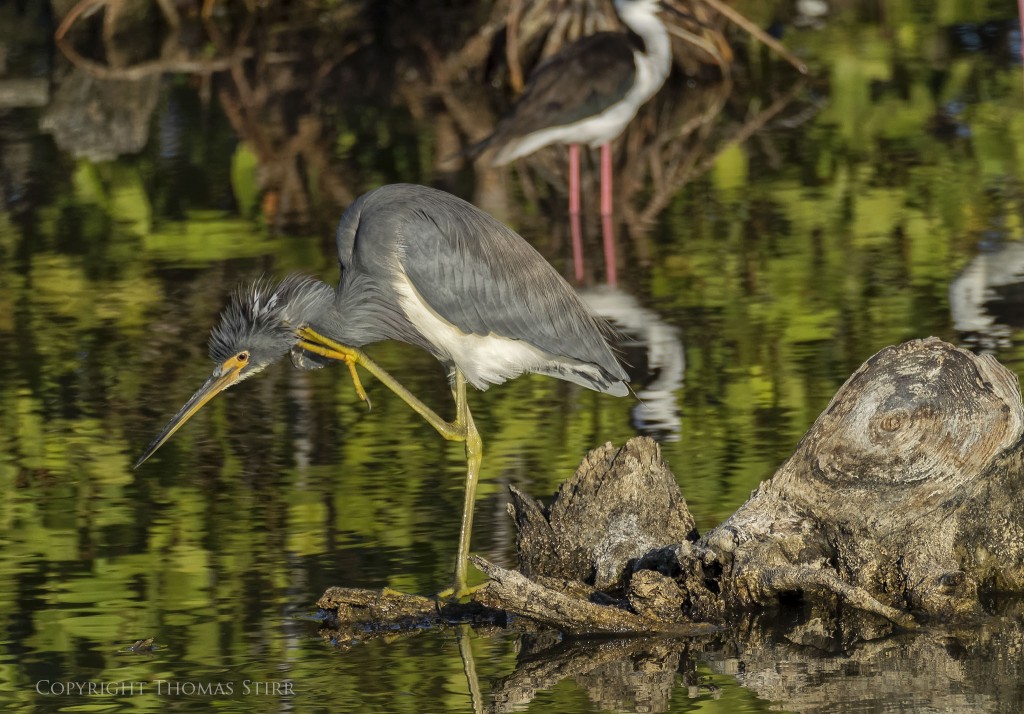
The weather was pleasantly warm as could be expected at this time of year in the Caribbean, but I did face a wide range of wind conditions. When the surface of the water was particularly rough and choppy I didn’t bother trying to photograph any of the water birds as the water surface would have been far too distracting. Instead, I headed off to find small birds in trees or lizards to photograph. Often the mornings were more placid and allowed for a more creative approach to composition – well, at least my attempt at it.

Overall, I really enjoyed spending time each day being out in the fresh air, finding and photographing birds – and a few other critters. I now have a much better appreciation for the enjoyment that folks get from bird watching and from nature photography in general.
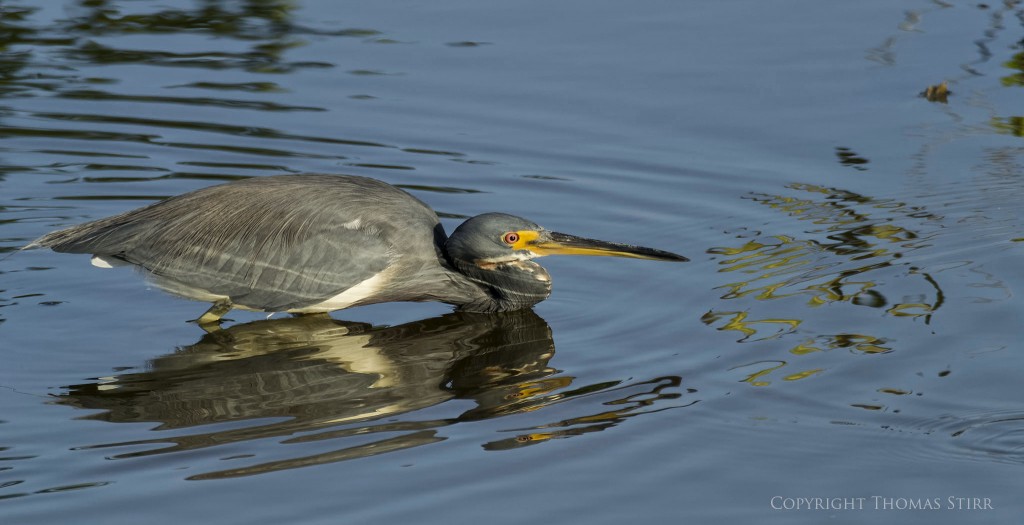
I ended up getting the most images of the Great Blue Heron.
Technical Note: All images were taken hand-held using a Nikon 1 V2 with Nikon 1 CX 70-300 f/4.5-5.6 VR lens. Images were produced from RAW files initially processed using DxO OpticsPro 10. A DNG file was then exported into CS6 and Nik Suite for additional adjustments as required.
My intent is to keep this photography blog advertising free. If you enjoyed this article and/or my website and would like to make a modest $10 donation through PayPal to support my work it would be most appreciated. You can use the Donate button below. Larger donations can be made to tom@tomstirr.com through PayPal.
Article, all images and YouTube videos are Copyright Thomas Stirr. All rights reserved. No use, duplication or adaptation is allowed without written permission.


Tom: Your pictures taken in Cuba are simply superb and I look forward to more articles and photos in this series. Perhaps you can help me with an issue I am having photographing birds either in flight or while perched. I use, either the Nikon 70-300 mm f/4.5-5.6 G lens or the Tamron 150-600 mm f/5-6.3 Di VC, lens and usually set my Nikon 7100 camera to F8, AF-C focus with 9 point matrix metering and depending on the light, set the ISO between 100 to 400 . The white balance usually remains in auto. Most times I will use the single shutter release and once in a while I will try the CH shooting mode which gives up to 6 frames per second. The issue I am having is that if I am focusing on the eye of the bird, the eye and some of the beak is sharp but the rest of the bird’s head and body are not always in focus. I always blame myself for not holding the camera and lens secure enough resulting in some blurring. Any suggestions are very much appreciated.
Hi Ray,
If the eye of the bird is in focus and its beak is not then it likely has more to do with the depth-of-field of the lens at any given focal length than it does with your technique. The longer the lens the shallower the depth-of-field. If the bird is facing you with its beak towards the camera you may still get some of the beak out-of-focus through no fault of your own. Try taking a few images when the bird’s head is parallel to the sensor in your camera. If this produces images where the bird’s head is all in focus then you’ll know there is nothing wrong with your technique and it was really just a depth-of-field issue with the lens.
Depth-of-field is affected by the f-stop you use as well as the distance of the subject. For example, with your D7100, shooting at f/8 with a 600mm lens with a subject 20 feet away creates a depth-of-field of only 0.1 feet in front of your focusing point…1.2 inches! Even at 50 feet the depth of field would still only be 0.33 feet or about 4 inches in front or behind your focusing point. If you are shooting large birds at close range at 600mm it is understandable why it would be difficult to get the bird’s entire head in focus if the bird is looking towards you and its beak is facing you.
Tom
Thanks Tom:
I will work with these suggestions and hopefully get some great shots!
Hi Ray,
Based on some of the images you’ve showed me in the past, there’s no doubt you’ll get some great captures.
Tom